Michoacán is one of the most diverse states in Mexico. It is home to a wide variety of flora and fauna, and boasts a vast array of bird species that attract bird enthusiasts from all over the world.
The state’s diverse ecosystems, from mountain ranges and forests, to valleys and lakes, provide the perfect habitat for many different bird species. Michoacán’s bird population is also heavily influenced by its location on the migratory path of many North American bird species.
This article will provide an overview of the various bird species found in Michoacán and the characteristics that make them unique.
1. Acorn Woodpecker
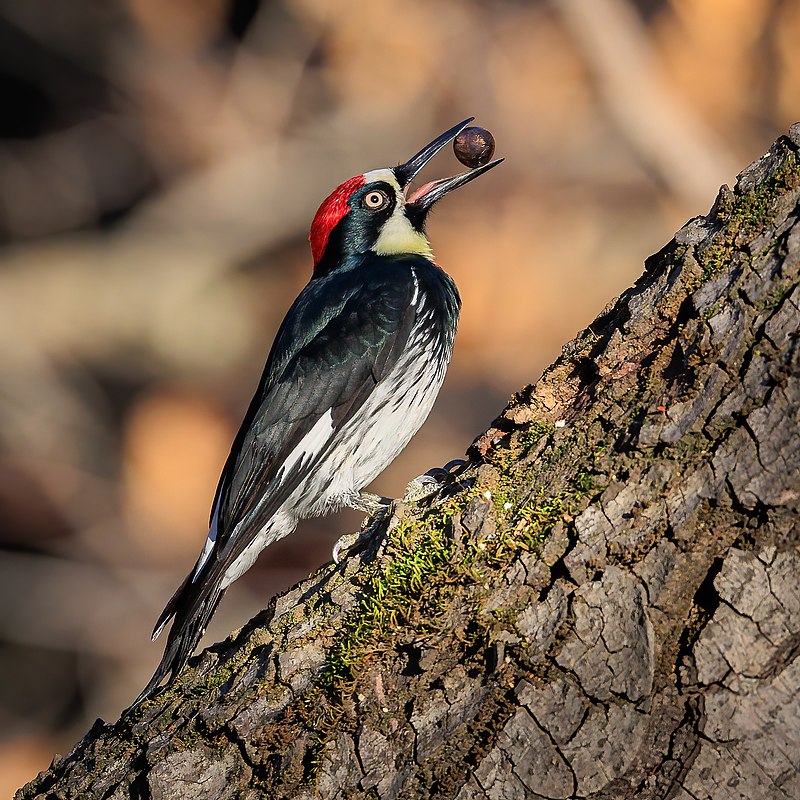
The Acorn woodpecker is a medium-sized bird with an average weight of 85 grams and 8.3 inches in length. It was first described by the English naturalist William John Swainson from a specimen collected in Mexico, back in 1827.
Its scientific name, Melanerpes formicivorus, combines Latin words meaning “ant” and “-vorous”.
This species has distinct black plumage all over its body except for some white patches on their wings and tail feathers which can be seen when flying or perched atop trees.
They are known to store acorns inside tree crevices as well as within bark cracks – often using them during lean times.
The acorn woodpecker is also socially active; they live together with other birds of their kind in groups called ‘granaries’. Their chirps are loud enough that they can easily be heard from afar.Scientific classification:
| Kingdom | Animalia |
| Phylum | Chordata |
| Class | Aves |
| Order | Piciformes |
| Family | Picidae |
| Genus | Melanerpes |
| Species | M. formicivorus |
Also Featured In: Most Common United States Birds, Birds that Live in the Grand Canyon National Park
2. Inca Dove
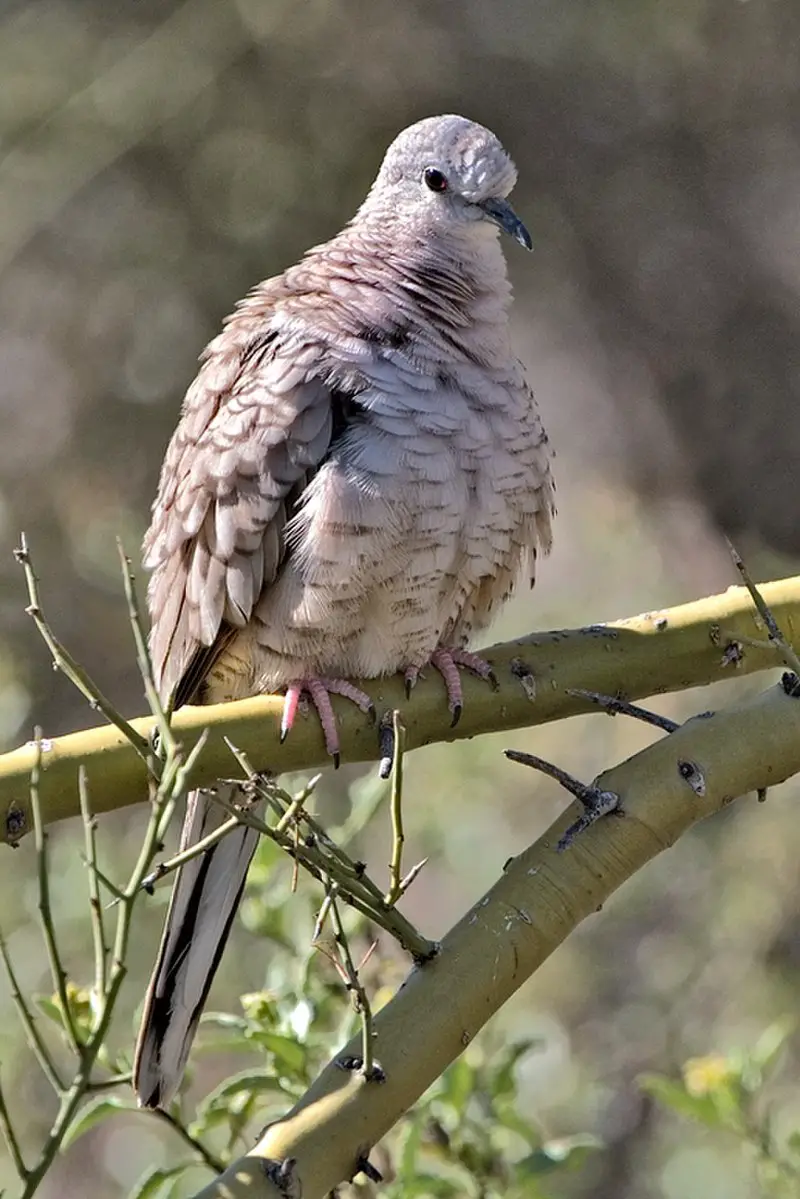
The Inca Dove is a small, slender bird found in the New World. It has an average length of 16.5–23 cm and weighs about 30-58 gm. Its wingspan measures around 28.5cm but can reach up to 32cm at max.
The body of this dove is grayish brown with feathers that are rounded off tips giving it a soft look overall.
This species was first described by French surgeon and naturalist René Lesson back in 1847 and since then have been living happily all over North America from Mexico through Texas to South Dakota, Kansas as well as parts of Arizona among others regions too.Scientific classification:
| Kingdom | Animalia |
| Phylum | Chordata |
| Class | Aves |
| Order | Columbiformes |
| Family | Columbidae |
| Genus | Columbina |
| Species | C. inca |
Also Featured In: Top Birds Found in Mexico, Birds You’ll Find in South Texas
3. Loggerhead Shrike
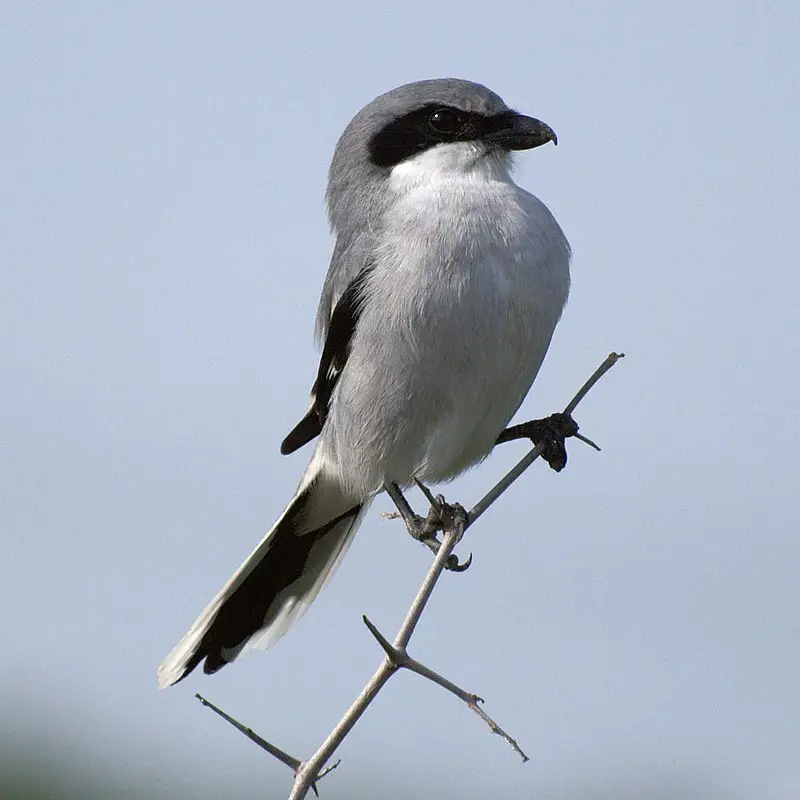
The Loggerhead Shrike is a carnivorous bird found only in North America. It belongs to the family Laniidae and is known as the “butcherbird” because of its habit of catching prey, such as amphibians, insects, lizards and small mammals.
The shrike has a black mask around its eyes and grey wings with white patches on them.
Its back is black with white spots that resemble stars or snowflakes; some individuals may have brown feathers instead of black ones.
This species feeds mainly by perching from elevated locations like bushes or trees where it can spot potential meals below it before diving down for capture.
Interestingly enough, these birds are also known to store their food by impaling it onto thorns which they use later when hungry.
With less than 2 million estimated population left in wild today this species needs our help so we should do whatever we can to protect them better.Scientific classification:
| Kingdom | Animalia |
| Phylum | Chordata |
| Class | Aves |
| Order | Passeriformes |
| Family | Laniidae |
| Genus | Lanius |
| Species | L. ludovicianus |
Also Featured In: Birds Live in Arkansas, Common Birds in Alberta
4. Colima Pygmy Owl
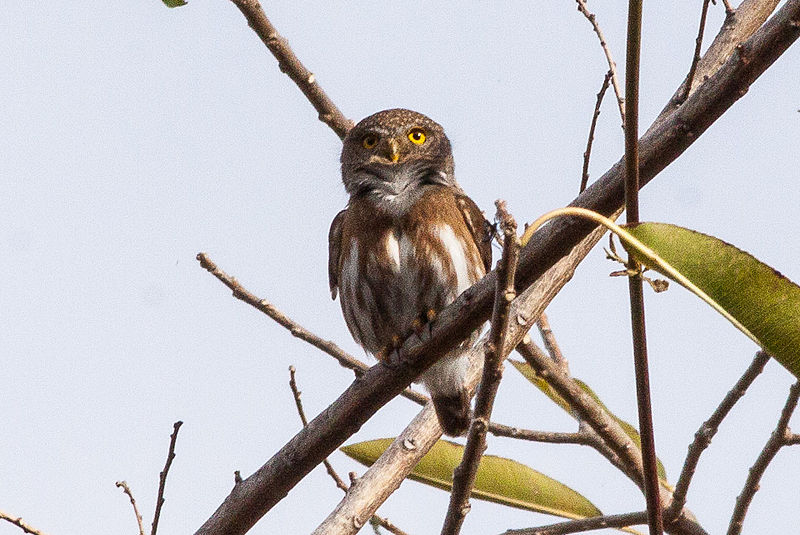
The Colima pygmy owl is a species of owl endemic to the western part of Mexico. It belongs to the family Strigidae and typically grows up to 8–9 inches in length, with males being slightly smaller than females.
The International Ornithological Committee recognizes three subspecies: G. palmarum palmarum, G. p oberholseri and G .p g.
They are mostly active during twilight hours when they hunt for small mammals like mice or voles from their perches atop trees or shrubs using their excellent hearing capabilities along with sharp eyesight which allows them superior vision even at night time.
During daytime, these owls can be found roosting on tree branches keeping cool under shady foliage while also remaining camouflaged amongst its surroundings due to its grey-brown coloration that helps it blend into bark patterns perfectly.Scientific classification:
| Kingdom | Animalia |
| Phylum | Chordata |
| Class | Aves |
| Order | Strigiformes |
| Family | Strigidae |
| Genus | Glaucidium |
| Species | G. palmarum |
Also Featured In: Puerto Vallarta Birds You Should Know,
5. Berylline Hummingbird
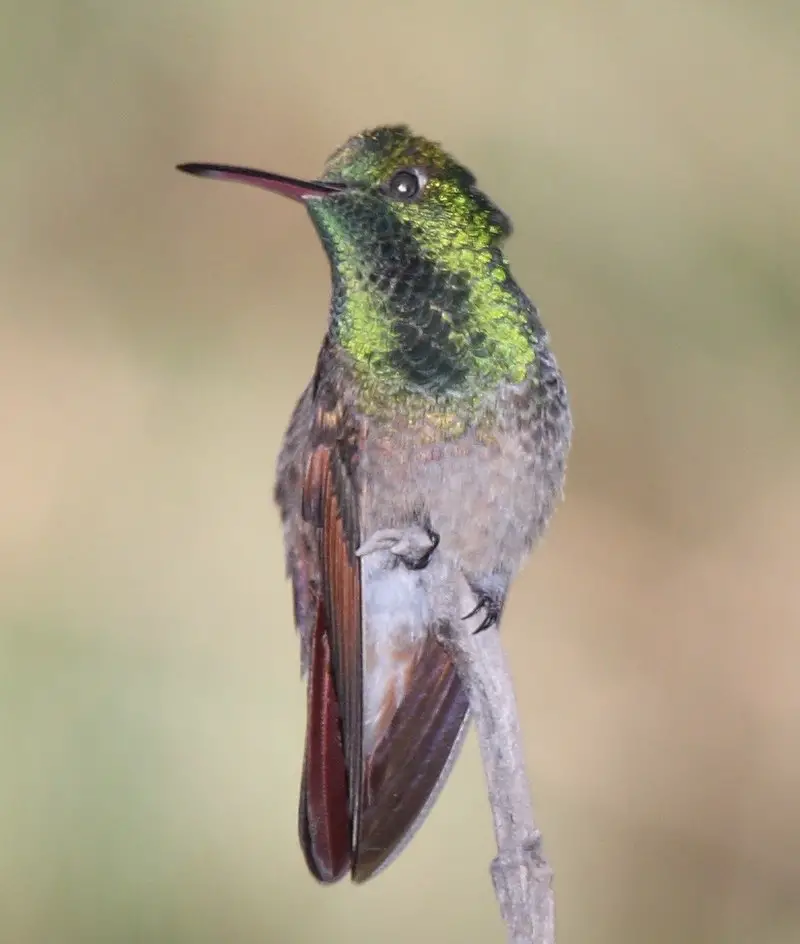
The Berylline Hummingbird is a vibrant species of hummingbird found in Central America and the United States.
It has emerald green upperparts, rufous sides and underparts, white tips to its tail feathers, as well as an iridescent purple throat patch.
These birds are highly territorial and will defend their territories against intruders with impressive aerial displays.
They feed on nectar from flowers such as bromeliads, columbines or agaves while searching for insects which they catch mid-air by hovering near foliage or flying low over meadows.
The Berylline Hummingbird is considered a Least Concern species due to its wide distribution range but it faces threats from habitat loss caused by urbanization and farming practices that reduce suitable nesting sites available for this bird.Scientific classification:
| Kingdom | Animalia |
| Phylum | Chordata |
| Class | Aves |
| Order | Apodiformes |
| Family | Trochilidae |
| Genus | Saucerottia |
| Species | S. beryllina |
Also Featured In: Most Beautiful Birds in Guatemala, Birds that You’ll Find in Chiapas
6. Whiskered Screech Owl
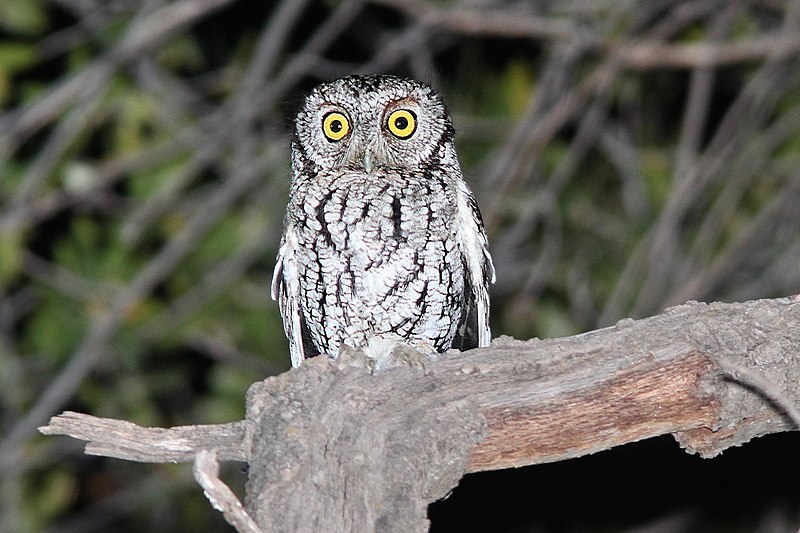
The Whiskered screech owl is a beautiful and unique species of small owls found in North and Central America.
It has two color morphs, brown or dark grey plumage with heavy barring on the breast, that makes it look very similar to a western screech owl but slightly smaller in size.
This bird has an impressive round head adorned by ear tufts, yellow eyes, and a yellowish bill. An adult whiskered screech owl measures 6.3 to 7.9 inches long from head to tail making them one of the smallest species of owls around.
They are incredible little creatures that should be appreciated for their beauty as well as their amazing natural abilities such as flying silently through the night skies while hunting for food without being noticed.Scientific classification:
| Kingdom | Animalia |
| Phylum | Chordata |
| Class | Aves |
| Order | Strigiformes |
| Family | Strigidae |
| Genus | Megascops |
| Species | M. trichopsis |
Also Featured In: El Salvador Birds,
7. American Dusky Flycatcher
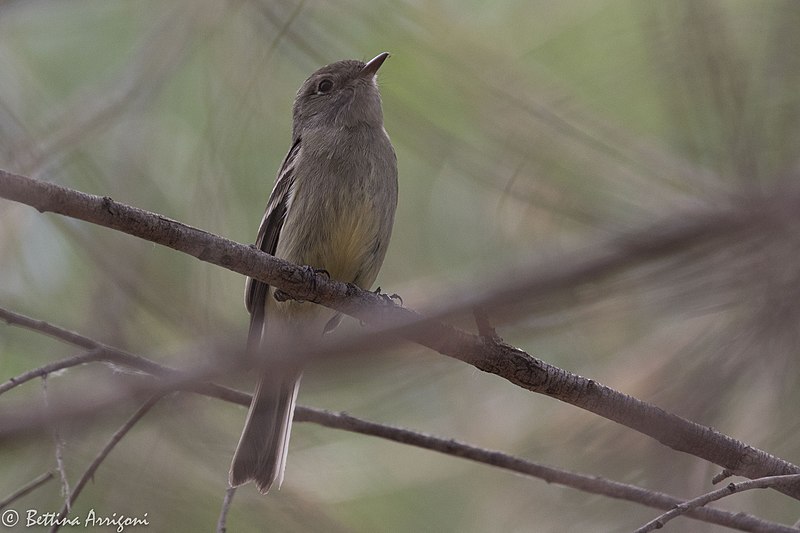
The American dusky flycatcher is a small insectivorous passerine belonging to the tyrant flycatcher family. It is one of many species in the Empidonax genus, which can be difficult to differentiate from each other due to their similar appearance and behavior.
The best way to identify this particular bird is by its unique voice; it has a loud “chick-a-dee” call that sets it apart from any other type of flycatcher.
Its plumage varies slightly depending on location, but typically consists of dark gray or brownish upperparts with whitish underparts and wings marked with white wingbars.
Dusky Flycatchers prefer open woodlands filled with deciduous trees such as willows or cottonwoods for nesting sites, where they feed on flying insects like flies and moths during breeding season.Scientific classification:
| Kingdom | Animalia |
| Phylum | Chordata |
| Class | Aves |
| Order | Passeriformes |
| Family | Tyrannidae |
| Genus | Empidonax |
| Species | E. oberholseri |
Also Featured In: Flycatchers Species,
8. Ash-Throated Flycatcher
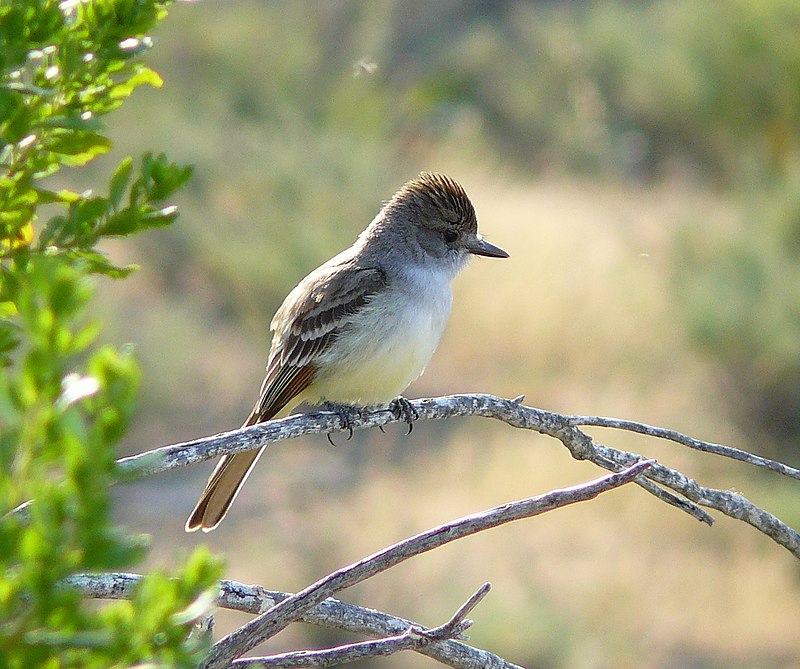
The Ash-throated Flycatcher is a small passerine bird that belongs to the tyrant flycatcher family.
First discovered in 1851 by George Newbold Lawrence, it was initially given the scientific name Tyrannula cinerascens and mistakenly described again as Tyrannula mexicanus.
This species of flycatchers is found primarily in western Texas but can be seen all over America including California, Arizona and Utah.
They have an ash gray head with yellowish underparts which gives them their unique coloration.
The back part of their heads are darker brown while they possess two white wingbars on either side of their wings.
They feed mainly on insects such as ants and beetles which they hunt from low perches or even take directly from foliage.
Their call consists of a loud “chek” sound followed by several high pitched notes at once making for quite a captivating singing performance.Scientific classification:
| Kingdom | Animalia |
| Phylum | Chordata |
| Class | Aves |
| Order | Passeriformes |
| Family | Tyrannidae |
| Genus | Myiarchus |
| Species | M. cinerascens |
Also Featured In: British Columbian Birds, Birds that Live in Morelos
9. Hammond’s Flycatcher
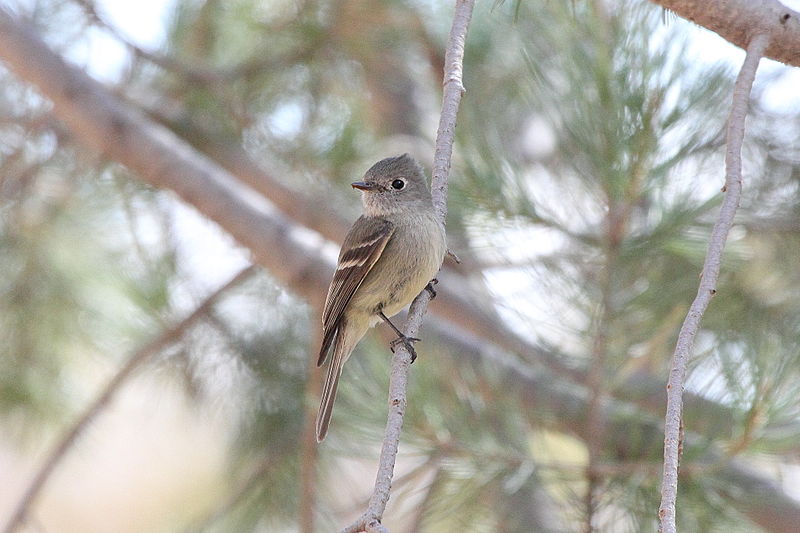
Hammond’s flycatcher is a small insectivorous bird found in the coniferous and mixed forests of Western North America.
It was named after William Alexander Hammond, who served as Surgeon General of the US Army and collected bird specimens for Spencer Fullerton Baird.
Adults measure between 12-14 cm long (4.7-5.5 inches) with a wingspan around 21cm (8 inches).
They have gray heads with yellowish eyestripe, olive backs and whitish bellies; their tails are dark on top and lighter underneath but often barred by black feathers across it widthwise.
Males possess rusty red throats which can be seen when they sing from an open perch to advertise mating opportunities or defend territories against rival birds during breeding season – usually occurring April through May or June depending upon location.Scientific classification:
| Kingdom | Animalia |
| Phylum | Chordata |
| Class | Aves |
| Order | Passeriformes |
| Family | Tyrannidae |
| Genus | Empidonax |
| Species | E. hammondii |
Also Featured In: Birds that Found in the Yellowstone , Birds that Live in Yosemite National Park
10. Cassin’s Kingbird
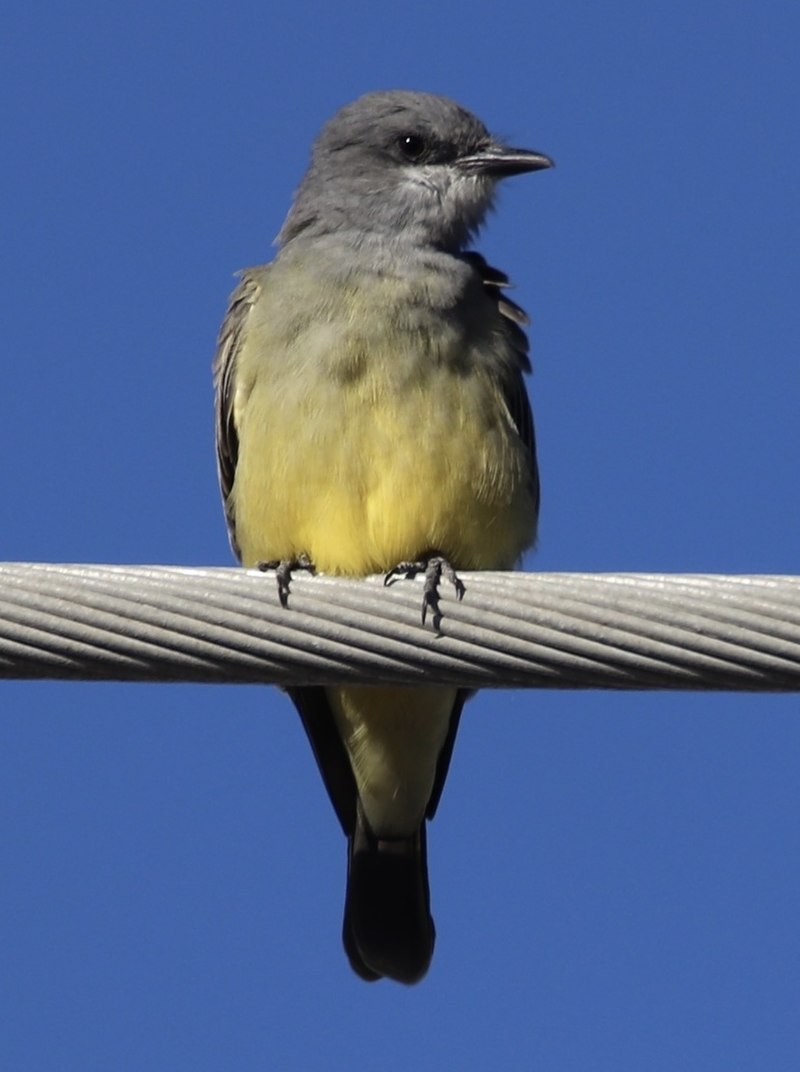
Cassin’s kingbird is a large tyrant flycatcher native to western North America. It was named in honor of the American ornithologist John Cassin and first described by English naturalist William John Swainson back in 1826, with its type locality being Temascaltepec, Mexico.
These birds are generally dark gray or brown on top with lighter underparts that have yellowish tints around the throat and belly region.
They also sport long tails which they often spread wide while perched atop branches or wires looking out for prey like insects as well as small reptiles or amphibians.
Their calls can be quite loud but usually consist of two syllables: “whee-er” or sometimes “whit-chew”.
In addition to their diet, Cassin’s Kingbirds defend territories against other species including hawks and crows during breeding season when they raise their young before migrating southward again come wintertime.Scientific classification:
| Kingdom | Animalia |
| Phylum | Chordata |
| Class | Aves |
| Order | Passeriformes |
| Family | Tyrannidae |
| Genus | Tyrannus |
| Species | T. vociferans |
Also Featured In: Birds Live Near San Diego, Orange County Birds You Need to See
11. Rivoli’s Hummingbird
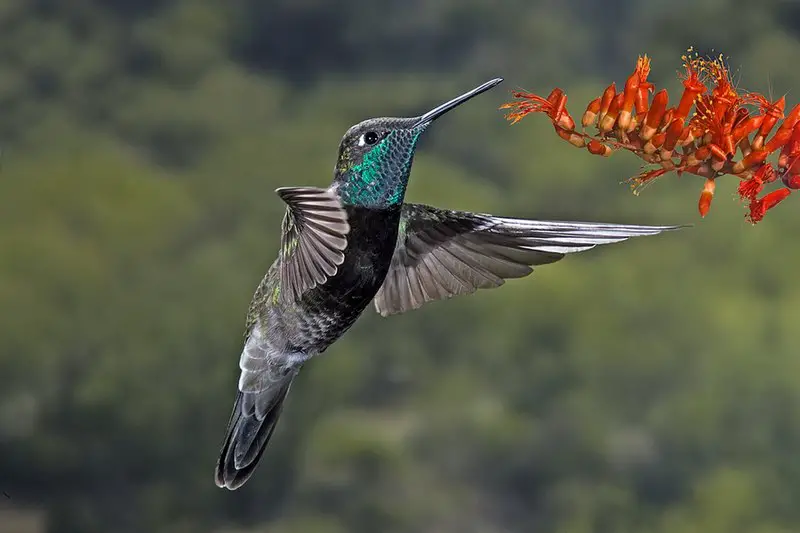
Rivoli’s hummingbird is a beautiful species of bird found in Central and North America. It belongs to the family Trochilinae, also known as “mountain gems”.
The male has an impressive iridescent purple-blue head and throat with greenish back, while the female has a more subdued coloring.
One unique feature about this species is its long tail feathers which can be up to twice as long as its body length.
This amazing bird feeds on nectar from flowers and insects such as midges, mosquitoes, spiders and moths; they even feed on sap from trees too.
Rivoli’s Hummingbirds are active during the day when their spectacular colors shine brightest making them easy to spot among other birds.
These tiny yet fascinating creatures provide us with endless hours of entertainment – it’s no wonder why they have been so adored over time.Scientific classification:
| Kingdom | Animalia |
| Phylum | Chordata |
| Class | Aves |
| Order | Apodiformes |
| Family | Trochilidae |
| Genus | Eugenes |
| Species | E. fulgens |
Also Featured In: Hummingbirds Species, Green Birds in That Live in Texas
12. Violet-Crowned Hummingbird
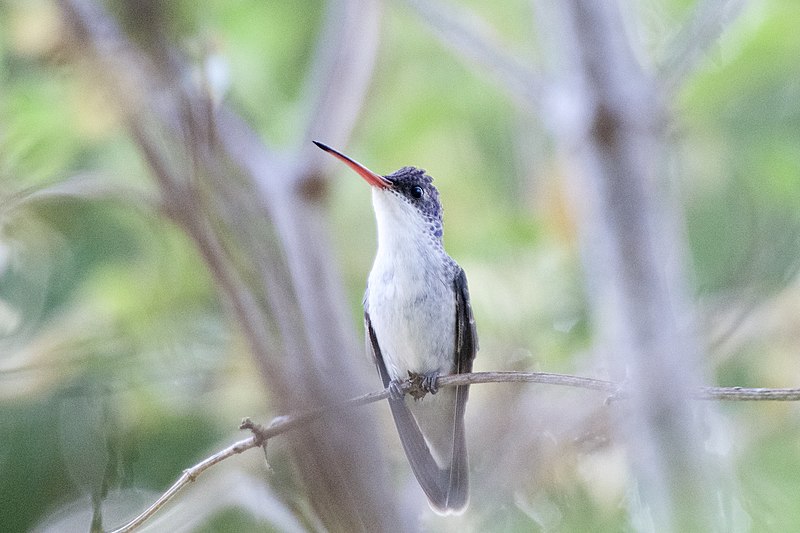
The Violet-crowned Hummingbird is a small, colorful bird found in Mexico and the southwestern United States. It belongs to the “emeralds” tribe Trochilini of subfamily Trochilinae, and was formerly placed in genus Amazilia.
The hummingbird has predominantly green plumage with white underparts, while its head features a distinctive violet crown that gives it its name.
On top of this striking coloration, males sport an iridescent gorget or throat patch which can range from purple to blue depending on lighting conditions.
These tiny birds feed mainly on nectar from flowers but also supplement their diet with insects caught mid flight for extra protein.
They are solitary creatures except during breeding season when they engage in territorial disputes over access to good food sources such as flowering trees or shrubs near water resources where there are plenty of bugs for them to catch too.Scientific classification:
| Kingdom | Animalia |
| Phylum | Chordata |
| Class | Aves |
| Order | Apodiformes |
| Family | Trochilidae |
| Genus | Ramosomyia |
| Species | R. violiceps |
Also Featured In: Birds that Live in Jalisco Birds, Most Common Birds Found in Nayarit
13. Cliff Swallow
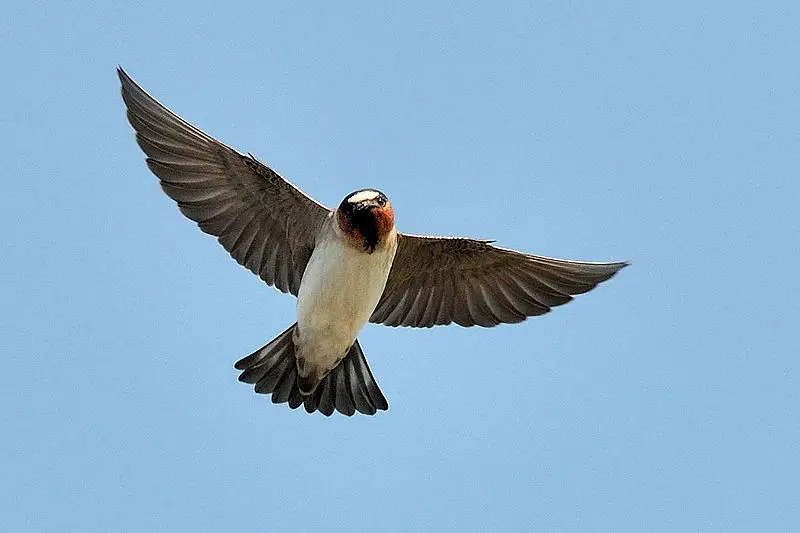
The Cliff swallow, or American cliff swallow (Petrochelidon pyrrhonota) is a species of passerine bird belonging to the family Hirundinidae. They are commonly found in North and South America.
These birds have an unmistakable appearance with their bright orange foreheads and flame-coloured backs that make them stand out from other swallows.
Cliff swallows form large colonies when nesting on cliffsides which makes them very social creatures; they often feed together while flying around fields or rivers looking for insects to eat.
In addition, they use mud pellets to build cup-shaped nests under bridges and eaves of buildings near water sources such as lakes, rivers and marshes – usually close by human dwellings.
Overall, these fascinating birds are both beautiful to look at yet practical too — providing insect pest control services through feeding on flies and mosquitoes in return for humans’ protection – what could be better?Scientific classification:
| Kingdom | Animalia |
| Phylum | Chordata |
| Class | Aves |
| Order | Passeriformes |
| Family | Hirundinidae |
| Genus | Petrochelidon |
| Species | P. pyrrhonota |
Also Featured In: Swallows Species, Blue Birds You’ll Found around Us
14. Ladder-Backed Woodpecker
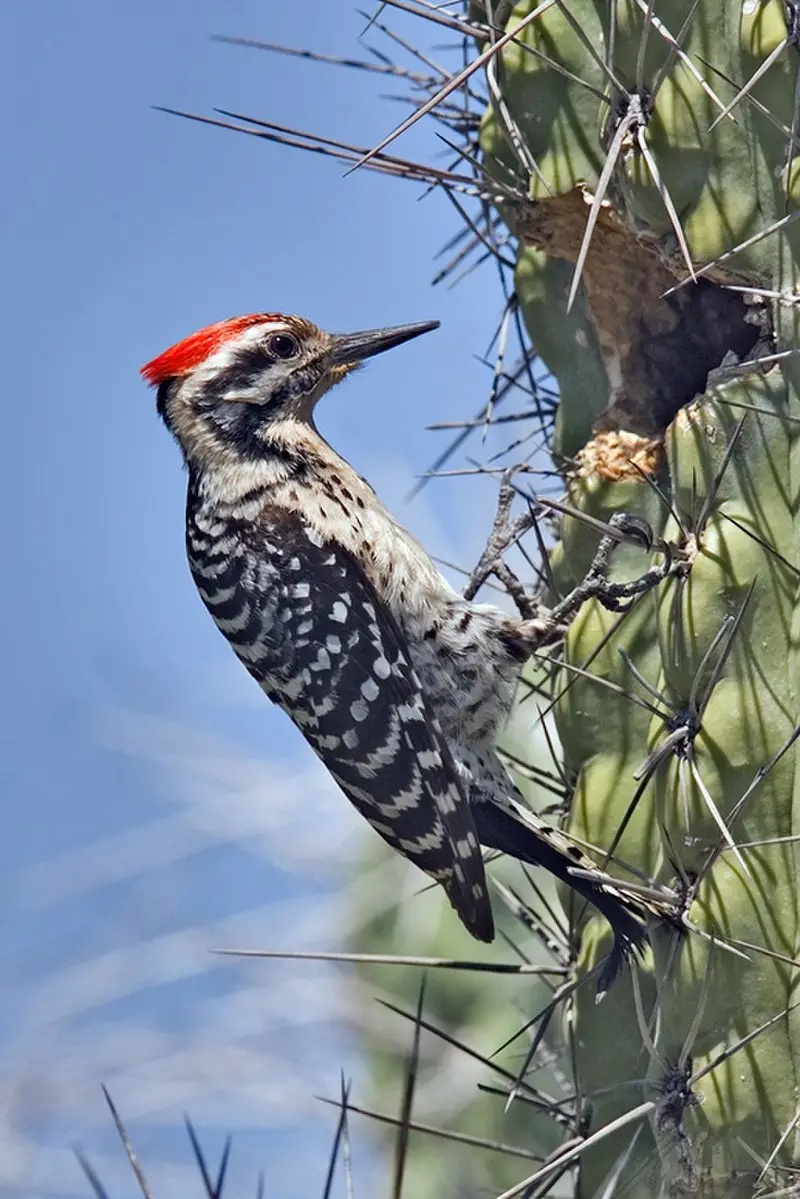
The Ladder-backed Woodpecker is a small black and white bird native to North America.
At about 16.5-19 cm in length, it has a characteristic barred pattern on its back resembling the rungs of a ladder, as well as speckled black rump and cream colored underparts on its breast and flanks.
These birds can be found inhabiting woodlands across their range, where they feed mostly on insects that they find by drilling into trees or hunting from exposed branches.
Their call consists of short chirps repeated every few seconds with an occasional longer trill thrown in for good measure.
They are also known to use twigs or other objects to probe crevices while searching for food – making them quite resourceful hunters indeed.Scientific classification:
| Kingdom | Animalia |
| Phylum | Chordata |
| Class | Aves |
| Order | Piciformes |
| Family | Picidae |
| Genus | Dryobates |
| Species | D. scalaris |
Also Featured In: Woodpeckers Species, Central Texas Birds
15. Spotted Wren
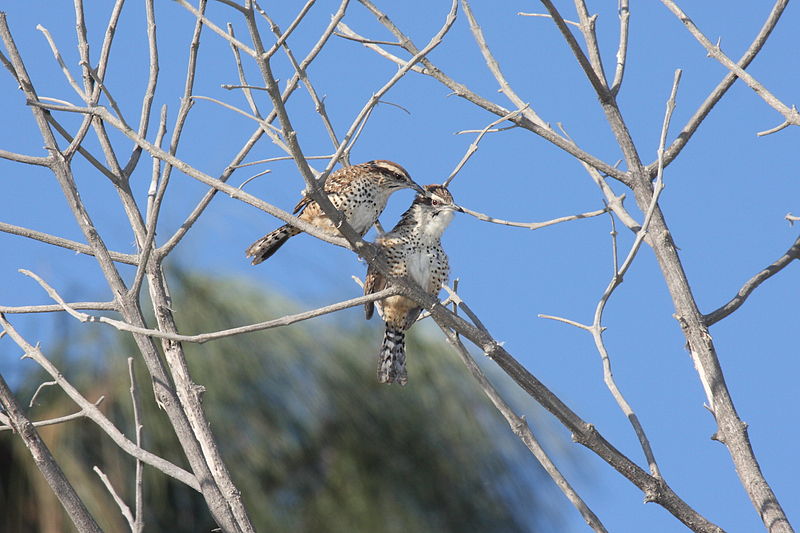
The Spotted Wren (Campylorhynchus gularis) is a species of bird native to Mexico. It’s typically around 17 cm in length and weighs between 28-31 grams, making it one of the smaller members of the Troglodytidae family.
It has sometimes been confused with Boucard’s wren due to similarities in their appearance but molecular data confirms that they are actually not closely related.
This species is monotypic meaning there aren’t any subspecies or varieties within its group; all spotted wrens look identical.
They have a brown back, white wings, black tail feathers and chestnut streaks on their flanks – giving them an attractive speckled pattern overall.Scientific classification:
| Kingdom | Animalia |
| Phylum | Chordata |
| Class | Aves |
| Order | Passeriformes |
| Family | Troglodytidae |
| Genus | Campylorhynchus |
| Species | C. gularis |
Also Featured In: Wrens Species,
16. Lesser Nighthawk
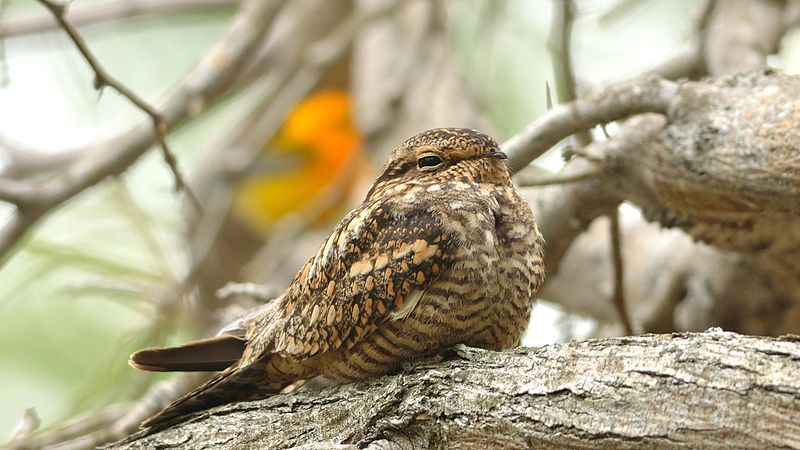
The Lesser Nighthawk is a nocturnal bird found across the Americas. Its dark brown and grey body has white patterning, while its long upper wings are black with a distinctive white bar visible in flight.
The tail is also black with thin white bars, while the underside of its body is buffy-coloured and finely streaked with horizontal lines.
Males have a bright white throat while females don’t; they both share an orange eye rim to complete their look.
During mating season males can be seen performing display flights at dusk over open areas like grasslands or riverbanks to impress potential mates.Scientific classification:
| Kingdom | Animalia |
| Phylum | Chordata |
| Class | Aves |
| Order | Caprimulgiformes |
| Family | Caprimulgidae |
| Genus | Chordeiles |
| Species | C. acutipennis |
Also Featured In: birds of Arizona, Birds that Live in the Deserts
17. Mountain Trogon

The Mountain Trogon, also known as the Mexican Trogon, is a bird species found in Guatemala, Honduras, and Mexico. It was first described by William John Swainson in 1827.
This bird belongs to the Trogonidae family and is sexually dimorphic. The male has striking metallic green-colored feathers on its crown, nape, upper parts and chest, while the female has a duller coloration.
Mountain Trogons are known for their distinctive calls, which are often heard within their habitat. These birds are found in mountainous areas and have been spotted as vagrants in El Salvador.
Overall, the Mountain Trogon makes for a beautiful sight with its bright green feathers, and its unique appearance is sure to capture your attention.Scientific classification:
| Kingdom | Animalia |
| Phylum | Chordata |
| Class | Aves |
| Order | Trogoniformes |
| Family | Trogonidae |
| Genus | Trogon |
| Species | T. mexicanus |
Also Featured In: Most Common Oaxaca Birds,